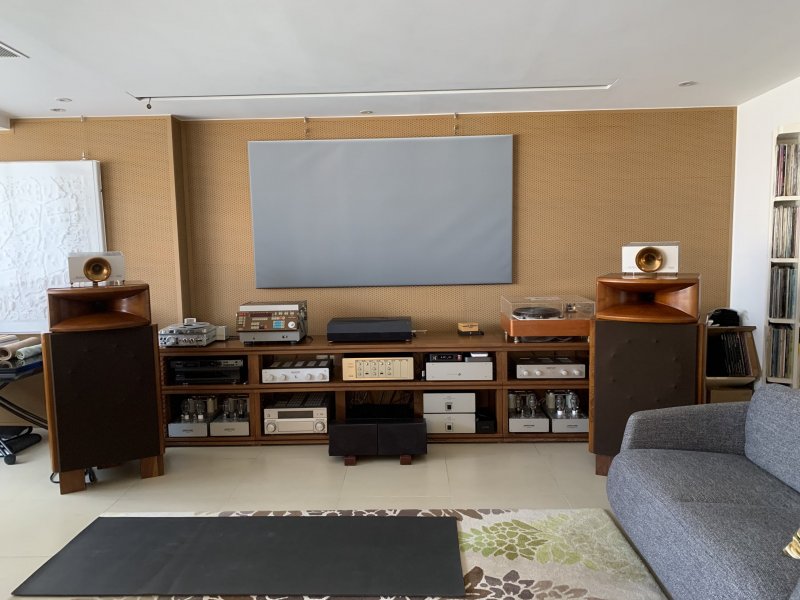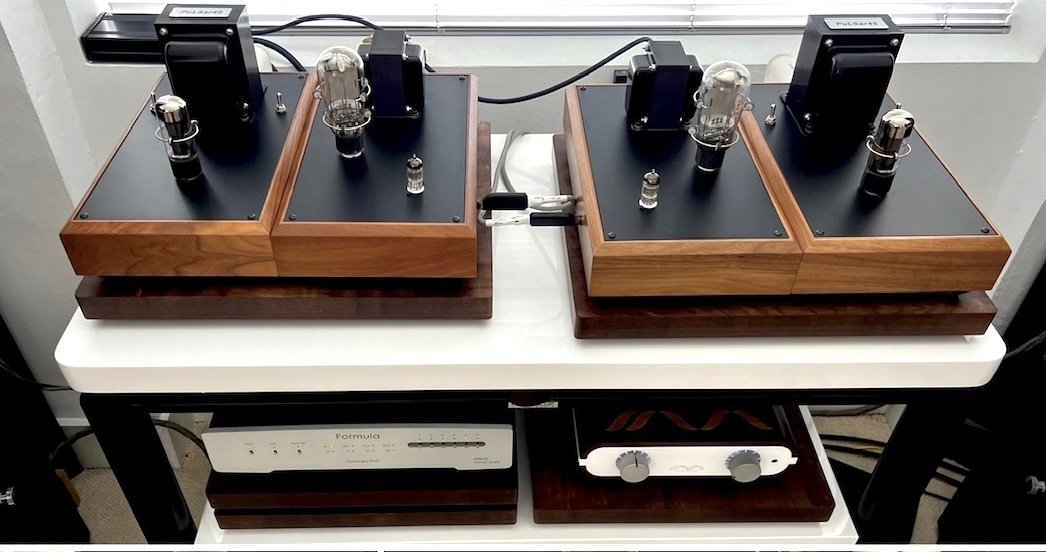Again, I understand your point. But he wasn’t referencing volume levels issues. His comparisons with the 3 amplifiers revealed that the 2A3 SET was/is the best sounding, most satisfying and enjoyable of this group to listen to music.
To further explain, he had preferred the Pass and T+A solid state amplifiers to other tube amplifiers. So it wasn’t strictly a tube beats transistor all of the time circumstance.
He simply found that the 2A3 SET mono blocks presented the better and more engaging sound via the Nenuphars.Purity, realism and naturalness were superior with this pairing.
Charles
We're talking about the same thing, unless he took extreme care to make sure the levels were the same. Again, its
very natural to use more power if that power is clean;
you don't even know you're doing it! I'm not talking about a transistor/tube thing here.
I've done a lot of work with 'full range' high efficiency drivers. None of them are full range! They need help in the bass and they need help in the highs. But if you have your head locked in position, the highs can be pretty good. The key is never play them loud. As soon as there's any serious bass notes on the diaphragm, distortion takes off and its not all that musical. So a low power tube amp that can't do that would easily come out on top.
Hi Ralph, do you mind elaborating here? Is this due to the output transformer? If so, why?
The larger you make any audio transformer, the harder it is to get wide bandwidth. Its easiest if there is no DC on either side of the transformer, and only marginally harder if the output transformer is Push-pull, where the opposing DC currents can cancel their magnetic fields in the transformer, thus reducing saturation. Its pretty easy to get 10-100KHz bandwidth with Push-pull with power levels of 60-100 Watts.
Not so with SETs where bandwidth is always tricky. Typically, B+ is fed to the output tube via the output transformer, and this causes saturation problems in the core, especially with bass. To counter this, most SET output transformers have a 'cut core' where there's a little saw cut somewhere in the core so as to break the DC magnetic circuit, thus helping to reduce the saturation problem. But this isn't good for bass response.
One solution is to use what's known as Parafeed, where the output transformer has no B+ on it at all, being fed by a coupling capacitor. That takes care of the DC saturation problem but of course the resistive coupling between the power tube and transformer is inefficient and introduces a timing constant that isn't usually good for bass.
Because the kind of speaker needed to work with such low power levels is likely a horn, and because horns usually don't make deep bass unless enormous, the designer has a certain leeway to move the bandwidth of the transformer up a bit so as to get a bit more high frequency response, especially if bass is going to be a lost cause.
There is a size limitation, since the larger you make the transformer (needed if you're going to make bass), the more you have problems with distributed capacitance in the windings so getting HF bandwidth gets trickier. On top of that with most SET designers, zero feedback is the goal, so to control phase shift (to get better soundstage imaging) you have to get as much HF bandwidth as you can. If you run feedback you don't need as much bandwidth since feedback can correct phase shift.
The problem with feedback is the traditional ways of injecting it into the amplifier causes the feedback signal to be distorted before it can do its job- such as into the cathode of the input tube. This adds higher ordered harmonics, causing the result to be harsher and brighter. There are ways of doing feedback to get around this problem, but designers are loathe to even try it because of prejudice in their market. Its too bad, because the resulting amp could retain the same musical nature while being more transparent and having greater usable power (as I mention often, SETs really should not be used above about 20-25% of full power if you want to really hear what the amp is about).
In practical terms, the 300b tends to be the maximum power you can get (about 7-8 Watts) and still have the amplifier have 'hifi' response. The lower the power of the amp, the wider the bandwidth of the output transformer and so less phase shift as well. So a 2A3 amp will have greater bandwidth and the type 45 even more which is why its been King for some time, although IMO/IME 0.75 Watts is impractical. I've run 45s both SET and Push-pull and much prefer them in Push-pull as they are so much more musical- easier to make out lyrics, smoother on top, etc, plus of course considerably more power...



















